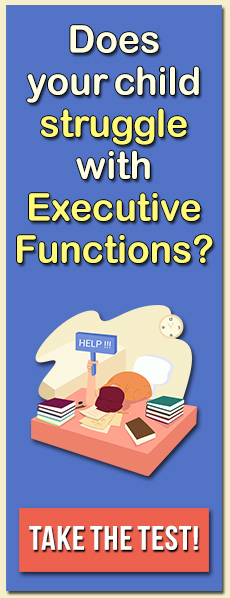Think of all the information you recall and use while reading. Simply by reading this sentence, you are scanning text, decoding meaning and understanding vocabulary. Reading requires us to recall relevant information we’ve (hopefully) already committed to memory, putting our Working Memory skills to use as we gain comprehension.
Improving Working Memory skills can therefore lead to improvements in reading fluency and comprehension, and many games and apps offer ways to exercise memory and practice reading. Super Mario Galaxy 2, for example, tasks players to memorize a variety of attacks, powers and special moves, then apply them in battle and puzzle-solving situations. Players often have to read gameplay tips to understand the application of each move, as well as to fill out the game’s story. Apps like Sports Illustrated for Kids get kids reading about material they’re already interested in, helping them retain relevant information which will expand and grow the more they learn about their favorite sports teams and players.
Digital training programs like Cogmed improve Working Memory by exercising the brain and literally altering its structure in the areas that manage memory. This type of working memory training can then lead to improvements in reading skills, following the neuroscientist’s adage, “the more they (the neurons in the brain) fire, the more they wire.”
While exercising Working Memory and reading skills using engaging media like games and apps can lead to improvement, kids can enhance the benefits by practicing a variety of related non-technological strategies. Integrating the following activities below will boost the benefits of your time spent with digital media, helping the skills practiced be applied to real life.
1.) Categorize your world. A number of studies have found that when category cues are applied to words and items (like filing hockey sticks, shin guards and baseball gloves under “sports”), children are twice as likely to remember other words associated with the terms than if left to remember them independently. This type of associative learning can improve reading comprehension, and is particularly helpful for expanding vocabulary. For example, you might want to group the words “pizza,” “apples,” “broccoli,” “chicken,” and “popcorn” into the category of “food,” and than add in trickier foods like papayas and asparagus. For older children, you can apply this strategy directly to reading comprehension by breaking down grammatical rules into subsets and grouping concepts together under larger categories like “Grammar,” “Punctuation” and “Syntax.”
2.) Do more than read. Present information to your child in as many modalities as possible, including visual, auditory, written, and tactile modes. In the case of “reading” consider the added use of an audiobook, comic book, television documentary or movie, which can serve to supplement core material and enhance memory and comprehension. We use very different parts of our brain for long-term memories, including verbal and visuo-spatial memory, and many people have great variations in their capacities for each of these forms of memory. Therefore, repetition and the use of varying modalities will often help in improvement of reading comprehension and memory.
[cjphs_content_placeholder id=”73597″ random=”no” ]
3.) Treat your home like a classroom. Strategies that can help guide youngsters and direct their learning in the classroom have uses at home, too. For example, parents should help their children “preview” the steps they need to take to complete basic tasks such as getting ready for bed. Encourage children to “predict” what happens if they miss a step and then help them to “connect” what they need to do with their “previous knowledge” of accomplishing these tasks. Asking children to “paraphrase” and “summarize” directions that they have just been given can also assist with remembering instructions, just as summarizing short paragraphs can help individuals to remember what they have read.
4.) Take note of your reading. Practice simple strategies for reading comprehension to reduce memory demands. Reading comprehension is a memory-intensive skill, as readers need to keep in mind what they have read and combine it with new information. The use of strategies such as underlining, taking short notes, and reading orally can improve children’s ability to understand and recall what they have read. Parents can have their children read the same material that has been read to them previously, and then have a brief discussion about it. Recapping previously covered material can help to increase focus and stretch memory.
5.) Get a head start. Preview materials prior to learning or memorizing them. Previewing or informing readers of what is to come helps know what to listen for and attend to the most important points by remembering relevant information. This sort of preparatory exercise can be applied to a range of tasks and subjects. Highlighting the most important parts of a history lesson before teaching it can help children to recall vital details and associate other information with them. For example, going ahead in a textbook and reading the section headings first can help individuals better understand the range of upcoming material, making it easier to contextualize the information as a whole when it comes time to read the entire chapter.





